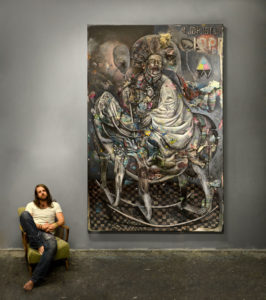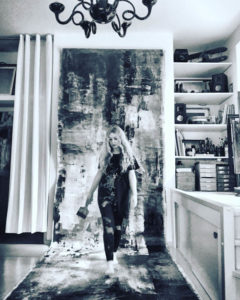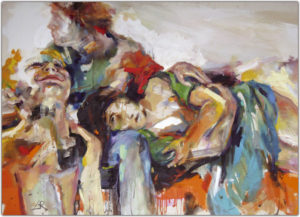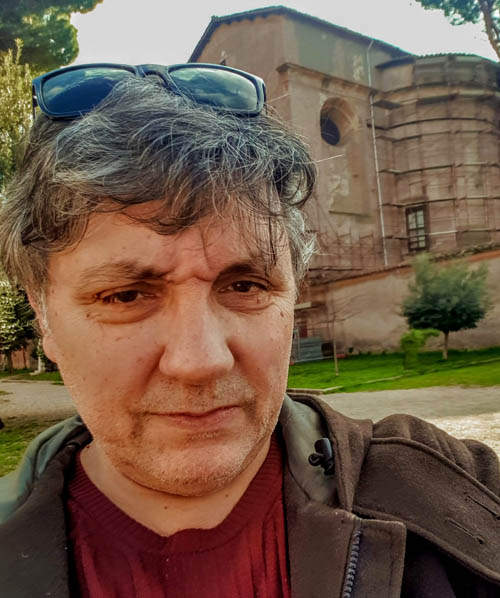I met Felix Höller, the youngest gallerist in Vienna, who despite his 32 years, after his studies in art history, already has a solid experience in the field, gained in the first four years on board of cruise ships of the AIDA company, for which he organized themed art exhibitions and auctions. Back on the mainland he gave life, together with his partner, to the Galerie Felix in a luminous room overlooking a beautiful square, near the Belvedere. His approach to the art market is very realistic and he prefers artists, especially Germans, who already have a market, are quoted and offer above all, as he says, a good level of quality.
How is the art market in Vienna as you would describe it?
It is a fact that more than three hundred galleries live in Vienna, but it is also true that it is a very transparent market in which everyone tries to differentiate their offer without stepping on their feet. Art galleries are often located in clusters, distributed at certain points in the city and form a sort of ecosystem that aims to attract fans. Here, in our neighborhood, for example, we organize together with the other galleries in the area a Sommerfest (Summer festival) during which we exhibit for a day all together and the results are often positive.
How do you choose of artists?
I am very happy to have works by artists like Lucia Riccelli, Dominik Schmitt and Erzsebet Nagy Saar in my program. I really care about an open relationship and collaboration with all the artists I represent. Only in this way is it possible to make a relationship last for several years. Then, luckily I have reached a point where I can choose the artists I want to represent and with which to identify shared paths.
Trends?
Many galleries in Vienna are dedicated to installations and conceptual art. I dedicate myself to more traditional painting. For example, until a few years ago there was a tendency to have works of portraits of famous people, such as Marilyn Monroe, as much as works of abstract art were much sought after. I prefer timeless art, which does not go out of fashion. I prefer artists who have projects, which develop concepts, but then realize them and make them become works of art, as happens, for example, in the case of Lucia Riccelli, who works most of the time in series of works inspired by a very precise concept and in which you can however follow and glimpse the creative idea and its realization.
Among the artists represented by Galerie Felix we find the Italian Lucia Riccelli, who decided to live in Vienna twenty years ago. Lucia is a dancer and performer, a teacher of painting and yoga. In the Felix Gallery she has recently presented an exhibition entitled Traces, together with photographer Laurent Ziegler and dancer Maartje Pasman. Works on raw canvas by Riccelli and photographs by Ziegler realized in a reference to collaborations and contaminations on movements by Pasman.
How was this exhibition born and what cooperation has been established between you and Laurent Ziegler?
In this exhibition I worked with Laurent Ziegler in a year-long process. See how painting and photography could be influenced by working together with the same subject but using them in a different way, overlapping layers of color and materials. We both love to stratify the materials. Laurent photographed my work while I was portraying the model and projected them on her using other materials as well. At the end of the work I let myself be influenced by its result to finish my work. The idea was to create a dreamlike dimension with respect to reality. The different direction of light is interesting. Laurent closes in the figure, as if the zoom penetrated the body, while in my paintings the light proceeds in the opposite direction. And the works in this way have an effect, so to speak, complementary.
How are your works perceived by the Austrian public?
I have been exhibiting in Vienna for several years now and I must say that I am satisfied with the reception of the public. Above all, it is appreciated the use of strong colors that stand out on the rough canvas and that in some way have become a sort of trademark of my work.
How does your dancer experience flow into your works?
It was the performing arts that led me to Austria. For about ten years I have worked in various dance theater companies and it is just telling stories through the movement that I recognized and could deepen some of the fundamental themes of my pictorial journey. In fact, it is stories told by the bodies that populate my canvases. My characters come from life, I extrapolate them from their everyday life, and I project them into this non-place, everything to be reinvented where I strip them from their context to leave visible especially the soul.
Info:
 Dominik Schmitt
Dominik Schmitt
 Erzsebet Nagy Saar
Erzsebet Nagy Saar
 Lucia Riccelli, Indifferent, 120 x 90, oil on canvas, 2009
Lucia Riccelli, Indifferent, 120 x 90, oil on canvas, 2009

Graduated in German Literature, cultural operator between Rome and Vienna and co-founder of the Raabe association in Rome, public official, passionate about art, photography, theater and literature, translator. In Vienna he collaborates in the management of the cultural space ALBERI Kulturbau which hosts, among other things, performances and art exhibitions.






NO COMMENT